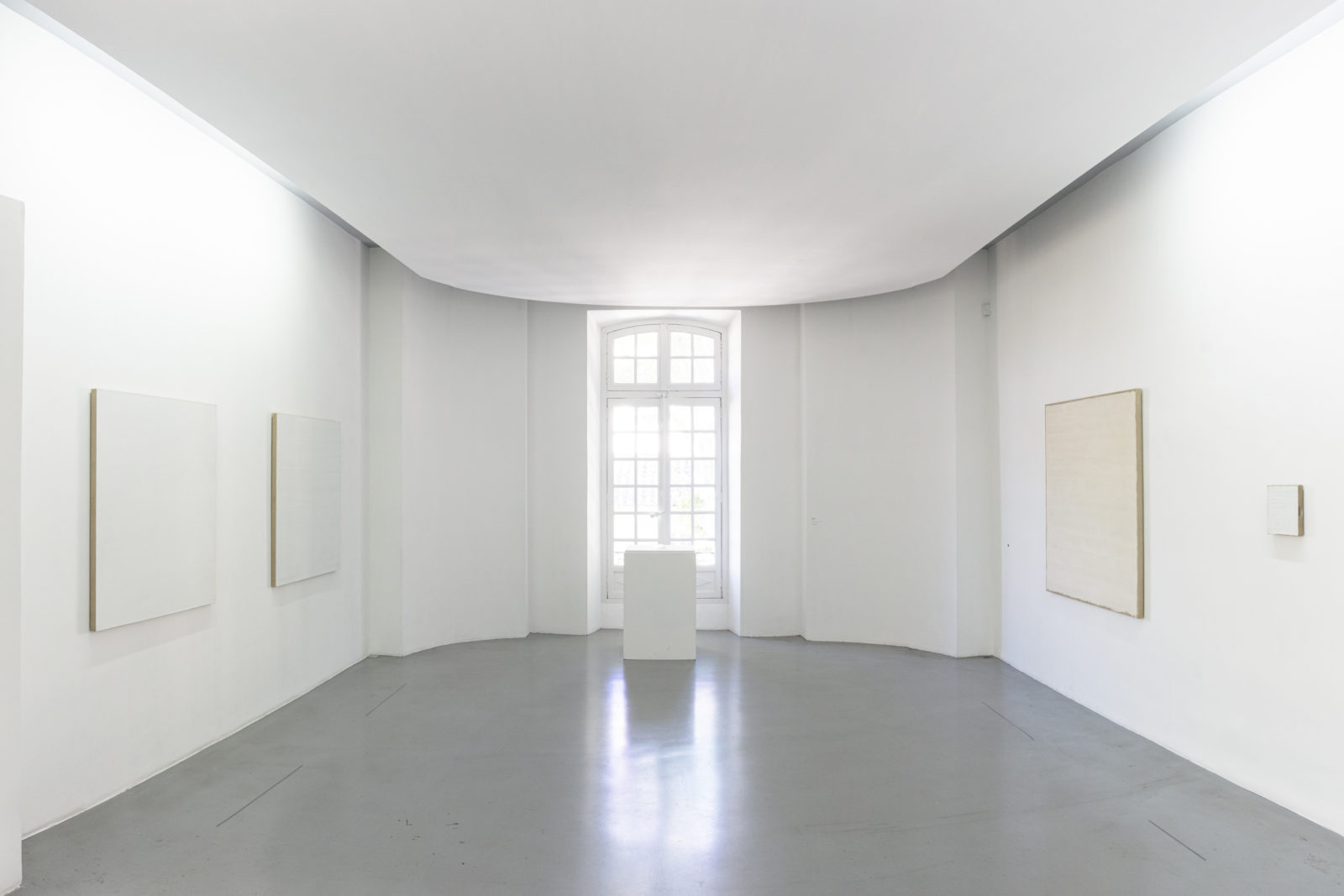Works from the Collection Lambert
Until March 2020
The museum continues its series of presentations of the Collection Lambert, exploring, in a broad panorama of sensibilities, the singularity of this unique collection of artworks assembled with the discernment of a key figure in the art of the second half of the 20th century and the beginning of the 21st.
The ruptures initiated in the 1960s -1970s, and the new ways of thinking art they established, nourished the artistic practices of the last sixty years as well as Yvon Lambert’s vision. The great artworks constituted both ruptures with past creations, opening up new possibilities in art, and invitations to new readings of history with which they wove conscious, unprecedented bonds – to borrow from Jean Frémon’s reflexions about Robert Ryman, to whom the Collection Lambert pays homage by devoting two rooms to his work.
Minimal art, conceptual art and land art, of which Yvon Lambert was one of the first defenders in Europe, introduce this new path together with some of the key players of these founding movements. The return to figurative painting at the beginning of the 1980s, as well as photography, video and installations – whose presence has become elemental in the art domain – lead the visitor through the evolution of the collector’s choices, always advancing towards the future, steering clear of all academism.
Artists
Carlos Amorales, Carl Andre, David Armstrong, Mirosław Bałka, Miquel Barceló, Robert Barry, Slater Bradley, Marcel Broodthaers, Daniel Buren, Claire Fontaine, Anna Gaskell, Nan Goldin, Douglas Gordon, Loris Gréaud, Jenny Holzer, David Horvitz, Koo Jeong-a, Donald Judd, On Kawara, Anselm Kiefer, Joseph Kosuth, Claude Lévêque, Sol LeWitt, Richard Long, Robert Mangold, Brice Marden, Gordon Matta-Clark, Jonathan Monk, Olivier Mosset, Rei Naito, Bruce Nauman, Dennis Oppenheim, Giulio Paolini, Robert Ryman, Richard Serra, Ross Sinclair, Vibeke Tandberg, Niele Toroni, Richard Tuttle, Salla Tykkä, Andy Warhol, Paul Wallach, Lawrence Weiner.
Robert Ryman

“It was never my intention to make white paintings. And it still isn’t. I don’t even think of my work as white paintings. The white is just a means of exposing other elements. White enables other things to become visible.” Robert Ryman
Following the death of the American artist Robert Ryman on February 8, 2019, the Collection Lambert decided to exhibit eight of his works held in Avignon. In this way, the museum gave the public a unique opportunity to discover one of the finest collections of works by a major painter of the 20th and early 21st century.
In May 1930, Robert Ryman was born in Nashville, Tennessee. In 1952, he moved to New York where he dreamt of making a career as a jazz musician. There, he discovered art on his own, teaching himself by roaming the numerous museums and galleries the city has to offer. As early as 1953, he decided to develop this electroshock encounter by taking a job as a guard at the Museum of Modern Art, following the example of other artists of his generation – Sol LeWitt, Robert Mangold, Dan Flavin, and the art critic Lucy Lippard – all driven by a profound desire to revolutionise art in its entirety.
In the rooms of the New York museum, he became familiar with the great modernists and immersed himself in their finest and most radical works: Malevich, Rothko, Mondrian and above all Matisse, of course. Following in the footsteps of the latter, who, at the end of his life, expanded yet further the field of modern painting with his pure colour cut-outs, Robert Ryman pursued his quest for the very essence of painting and the emotion it provokes by freeing himself, in his turn, of all virtuosity.
Stroke by stroke, mark by mark, work by work, Robert Ryman tells us how he paints and what painting can be in its totality, from its constituent elements to its activation in an exhibition space and its encounter with the spectator.
Robert Ryman was born in 1930 in Nashville (Tennessee, United States) and died in 2019 in New York.
The second issue of the Cahiers de la Collection Lambert will be dedicated to Robert Ryman and will follow the first volume devoted to Sol LeWitt.
Photo : Jenny Holzer / © Adagp, Paris- Cnap et Claire Fontaine / © Claire Fontaine